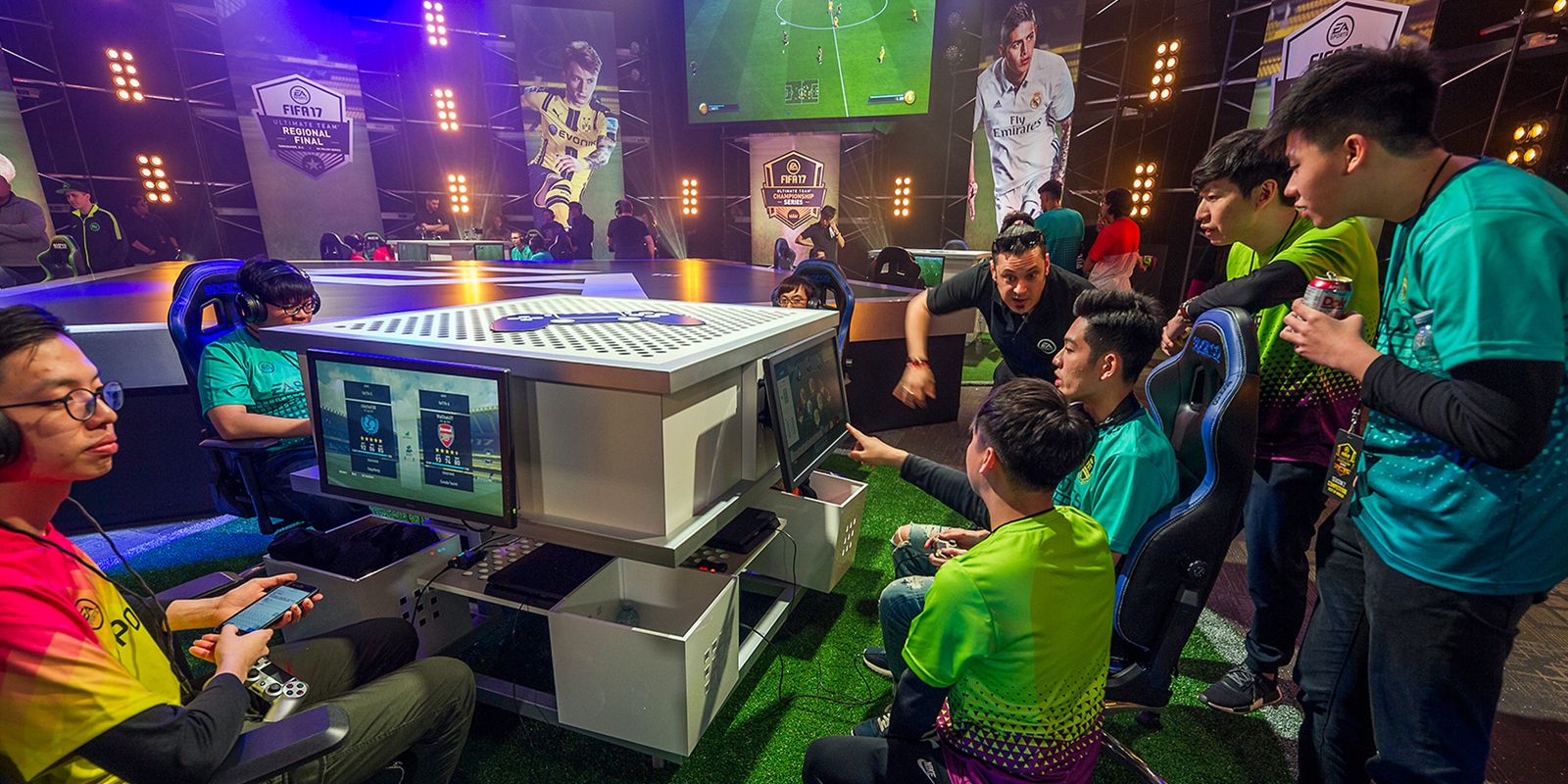The Future Of Two-Player Competition: A Glimpse Into Gaming In 2025
The Future of Two-Player Competition: A Glimpse into Gaming in 2025
Related Articles: The Future of Two-Player Competition: A Glimpse into Gaming in 2025
Introduction
In this auspicious occasion, we are delighted to delve into the intriguing topic related to The Future of Two-Player Competition: A Glimpse into Gaming in 2025. Let’s weave interesting information and offer fresh perspectives to the readers.
Table of Content
The Future of Two-Player Competition: A Glimpse into Gaming in 2025

The year 2025 is not far off, and the landscape of gaming is poised for significant transformation. While the single-player experience continues to evolve, the realm of two-player games, particularly those emphasizing direct competition, is experiencing a resurgence. This resurgence is fueled by a confluence of factors: technological advancements, shifting player demographics, and a renewed appreciation for the social and strategic aspects of head-to-head gameplay.
Technological Advancements: Shaping the Playing Field
The evolution of gaming technology is a driving force behind the growth of two-player games. The advent of virtual reality (VR) and augmented reality (AR) has ushered in a new era of immersive and interactive gameplay. VR headsets, with their ability to transport players into virtual worlds, offer unparalleled opportunities for intense and engaging competition. Imagine battling in a virtual arena, feeling the weight of your weapon in your hands, and experiencing the thrill of victory or the sting of defeat with heightened realism.
AR, on the other hand, blends the digital and physical worlds, creating unique and dynamic gameplay experiences. Imagine playing a game of strategy on your kitchen table, where virtual elements like units and terrain seamlessly integrate with the real world. This fusion of physical and digital elements opens up new avenues for creative and engaging two-player experiences.
Beyond VR and AR, the rise of cloud gaming platforms and the increasing accessibility of high-speed internet connectivity are enabling seamless online multiplayer experiences. Players can now compete against each other from anywhere in the world, fostering a global community of gamers. This accessibility has democratized competitive gaming, making it possible for anyone with an internet connection to participate in thrilling head-to-head matches.
Shifting Player Demographics: A New Generation of Gamers
The demographics of gamers are changing, with younger generations increasingly embracing digital platforms and interactive experiences. This shift in demographics has led to a renewed interest in social and competitive gaming. Younger players, raised on multiplayer games and online communities, crave the social interaction and the thrill of competition that traditional two-player games offer.
Furthermore, the rise of esports has further popularized competitive gaming, attracting a wider audience and demonstrating the potential for professional success in the gaming arena. As esports continues to grow, the demand for engaging and competitive two-player games will likely increase, creating a fertile ground for new and innovative game designs.
The Appeal of Direct Competition: A Return to Fundamentals
Despite the popularity of online multiplayer games, there is a growing appreciation for the simplicity and immediacy of direct, head-to-head competition. Two-player games offer a focused and intimate experience, fostering a sense of intense rivalry and strategic thinking. The absence of distractions and the direct interaction with an opponent create a unique and rewarding gameplay experience.
Moreover, two-player games often emphasize skill and strategy over luck or random chance. This focus on player skill and decision-making fosters a sense of accomplishment and satisfaction when players overcome challenges and outmaneuver their opponents. The ability to directly influence the outcome of the game, through strategic planning and tactical execution, provides a sense of agency and control that is highly rewarding for players.
Beyond Traditional Genres: Expanding the Horizons of Two-Player Gameplay
While traditional two-player genres like fighting games, strategy games, and board game adaptations continue to thrive, the future of two-player gaming is expanding beyond these familiar territory. New genres, fueled by innovative game mechanics and technological advancements, are emerging, offering a diverse range of gameplay experiences.
For example, the rise of asymmetric gameplay, where players control different factions with unique abilities and objectives, is adding a new layer of complexity and strategic depth to two-player games. This asymmetry creates a dynamic and unpredictable playing field, requiring players to adapt their strategies and tactics to counter their opponent’s unique strengths.
Furthermore, the integration of augmented reality is blurring the lines between physical and digital worlds, creating new possibilities for two-player games. Imagine playing a game of strategy on your kitchen table, where virtual elements like units and terrain seamlessly integrate with the real world. This fusion of physical and digital elements opens up new avenues for creative and engaging two-player experiences.
The Benefits of Two-Player Competition: Fostering Skills and Social Bonds
Beyond the entertainment value, two-player games offer a range of benefits, both cognitive and social. Playing competitive games can enhance critical thinking skills, problem-solving abilities, and strategic planning. The constant need to adapt to changing circumstances and outmaneuver an opponent forces players to think strategically and make calculated decisions.
Moreover, two-player games can foster a sense of camaraderie and healthy competition. The shared experience of playing a game together, the thrill of victory, and the disappointment of defeat, can strengthen bonds between players. The social interaction inherent in two-player games can promote communication, teamwork, and sportsmanship, all valuable skills in both personal and professional settings.
FAQs: Addressing Common Questions
Q: Are two-player games becoming obsolete in the age of online multiplayer games?
A: While online multiplayer games have gained immense popularity, two-player games remain relevant and continue to evolve. The direct competition, focused gameplay, and social interaction offered by two-player games appeal to a significant segment of the gaming community.
Q: What are some of the most anticipated two-player games in 2025?
A: It is difficult to predict specific titles, but emerging trends suggest a focus on VR and AR experiences, asymmetric gameplay, and innovative game mechanics. Expect games that push the boundaries of traditional two-player genres and offer unique and engaging gameplay experiences.
Q: Are there any benefits to playing two-player games over single-player games?
A: Two-player games offer a unique experience that single-player games cannot replicate. The direct competition, strategic thinking, and social interaction foster a sense of accomplishment, camaraderie, and cognitive development that single-player games may not provide.
Tips: Maximizing the Two-Player Experience
-
Embrace the competition: Approach two-player games with a spirit of friendly rivalry. The thrill of outmaneuvering your opponent and achieving victory is a key part of the two-player experience.
-
Communicate effectively: Whether playing online or in person, clear communication is essential for a successful two-player experience. Discuss strategies, coordinate tactics, and ensure both players are on the same page.
-
Be a good sport: Win or lose, maintain a positive attitude and respect your opponent. Sportsmanship is essential for fostering a healthy and enjoyable gaming environment.
-
Explore new genres: Don’t limit yourself to traditional two-player genres. Experiment with emerging genres and innovative game mechanics to discover new and exciting ways to play.
Conclusion: The Future of Two-Player Gaming
The future of two-player games is bright. Technological advancements, shifting player demographics, and a renewed appreciation for direct competition are driving the growth and evolution of this genre. From immersive VR experiences to innovative asymmetric gameplay, two-player games are poised to offer a diverse and engaging range of experiences. By embracing the social and strategic aspects of head-to-head competition, players can enjoy the thrill of victory, the challenge of defeat, and the unique benefits that two-player games provide. As gaming technology continues to advance and player preferences evolve, the future of two-player games promises to be exciting, innovative, and filled with thrilling competition.
![50 Best Competitive 2 Player Games on PS4 & PS5 [2023] - YouTube](https://i.ytimg.com/vi/TRBMyigly7k/maxresdefault.jpg)







Closure
Thus, we hope this article has provided valuable insights into The Future of Two-Player Competition: A Glimpse into Gaming in 2025. We thank you for taking the time to read this article. See you in our next article!
You may also like
Recent Posts
- The Evolving Landscape Of Online Gaming In 2025: A Look At Emerging Trends And Innovations
- The Evolving Landscape Of Online Gaming On PS4 In 2025: A Glimpse Into The Future
- The Evolving Landscape Of Free Online Gaming: A Look Into Microsoft’s Vision For 2025
- The Evolution Of Online Slots: Exploring The Landscape Of Free Play In 2025
- The Enduring Charm Of 8-Bit: Exploring Online Retro Gaming In 2025
- The Evolving Landscape Of Free Virtual Games: A Glimpse Into 2025
- The Evolving Landscape Of Online Two-Player Games For Kids: A Look At 2025
- Wordplay In The Digital Age: Exploring The Evolution Of Online Word Games In 2025
Leave a Reply